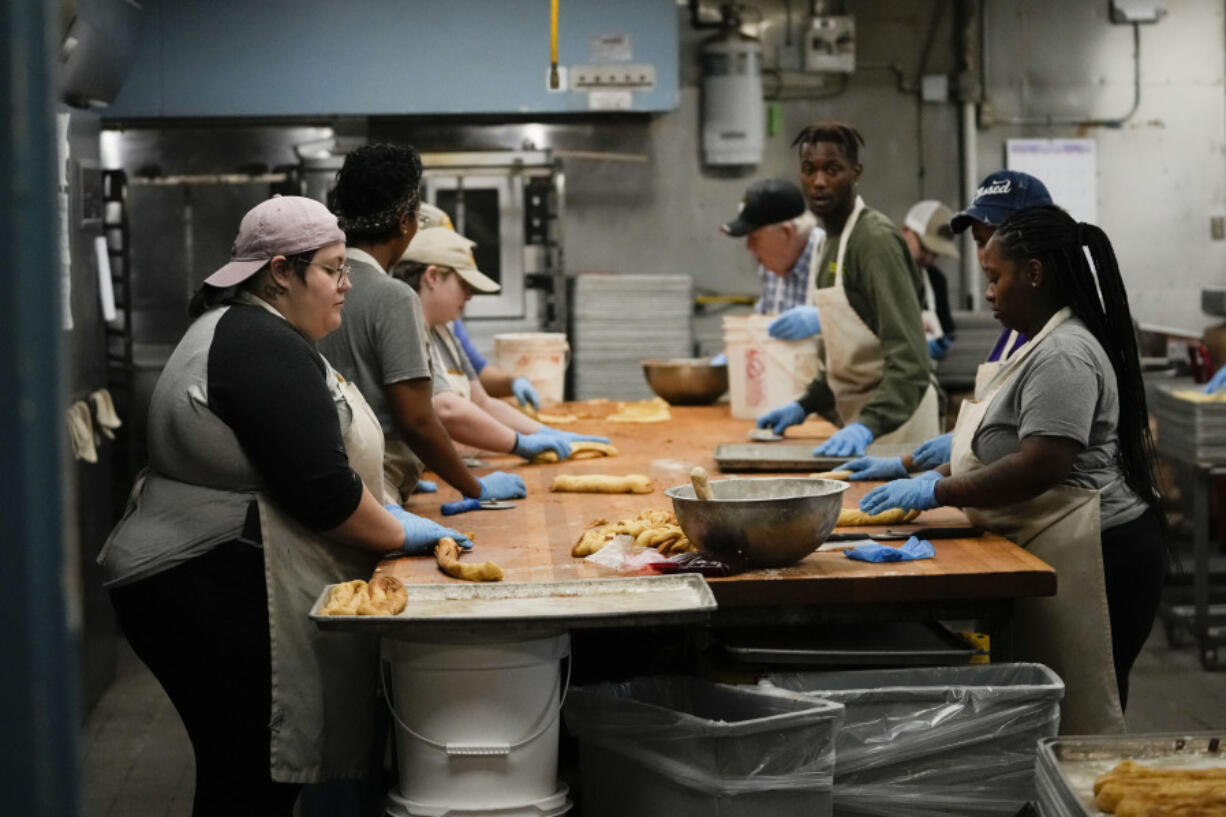NEW ORLEANS — It’s Carnival season in New Orleans, and that means lines are long outside local bakeries and the pace inside is brisk as workers strive to meet customer demand for king cakes — those brightly colored seasonal pastries that have exploded in popularity over the years.
“Mardi Gras is our busiest time of year,” said David Haydel Jr. of Haydel’s Bakery, who estimates the sale of king cakes in the few short weeks between Christmas and Lent accounts for about half the bakery’s income.
Behind him are racks holding dozens of freshly baked cakes ready for wrapping. Nearby, workers are whipping up batter in large mixers, rolling out lengths of dough, braiding and shaping them into rings, and popping them into ovens.
It’s a similar scene at Adrian’s Bakery in the city’s Gentilly neighborhood, where Adrian Darby Sr. estimates that king cakes make up 40 percent of his business.
“Without Mardi Gras, you know, you have to make cutbacks, and you don’t want to do that,” Darby said. “You’ve got full-time employees, and you want to maintain that.”
Roots go back far
Food historian Liz Williams said the roots of king cake culture date to Saturnalia celebrations of ancient Rome, when a cake was baked with a bean inside and whoever got the slice with the bean was deemed king for a day.
Over the centuries, the traditions developed and were adapted into European pre-Lenten festivals that evolved into the modern Mardi Gras traditions.
The evolution hasn’t stopped, according to Williams. King cakes in New Orleans were once uniform and simple — a ring of braided, lightly sweet brioche topped with purple, green and gold sugar. Instead of a bean, tiny baby dolls — made of china at first, now plastic — were baked inside.
“There was not really one variation from one bakery to another,” Williams said. But by the 1970s, changes were happening. Some bakers began using Danish-style pastry dough. Some began filling their king cakes with cream cheese or fruit preserves.
The treat’s popularity grew from one Mardi Gras season to the next amid the usual frenzy of parades and colorful floats, costumed revelry and partying in the streets.
Years ago, Williams said, king cakes were probably consumed a few times a year, perhaps during a king cake party during Carnival season.
Now, Williams said, Mardi Gras season means almost daily king cake consumption for some.
“People will pick up a king cake and take it to work, and whoever gets the baby has to bring one the next day, so people are eating it all the time,” Williams said.
Still, it’s not a year-round binge treat. Tradition holds that king cakes are not to be eaten before Carnival season begins on Jan. 6 nor after Mardi Gras — Fat Tuesday — which falls this year on Feb. 13.



